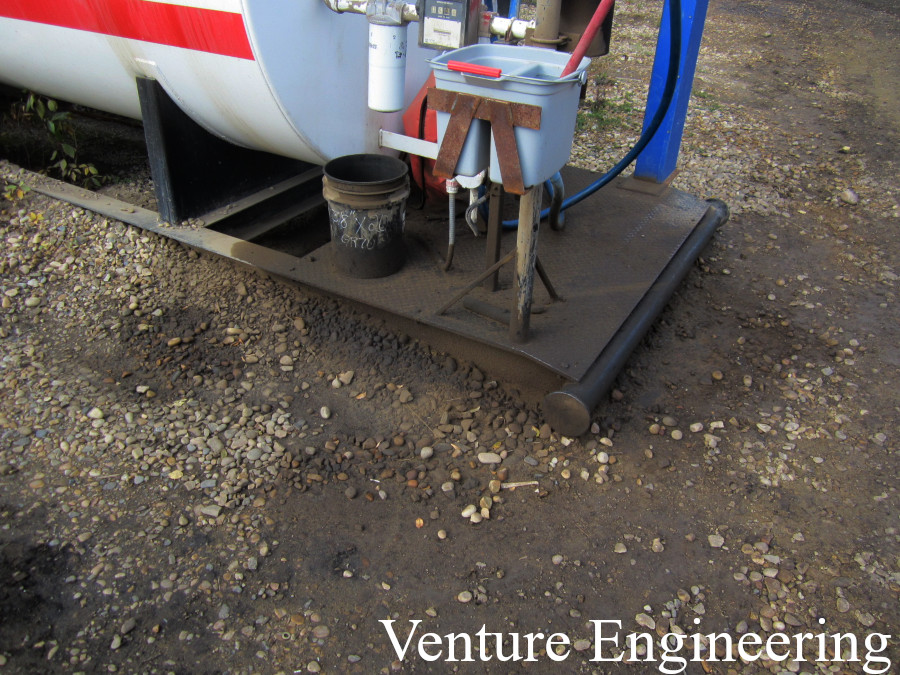What is a Recognized Environmental Condition (REC)?
A Recognized Environmental Condition (REC) is the presence or likely presence of any hazardous materials or petroleum products in, on, or at a property. An REC does not mean there is confirmed contamination, simply that it is possible. A Phase I ESA identifies RECs, and the report may recommend a Phase 2 ESA be conducted to confirm and evaluate the presence, amounts and effects of contamination on site and threat of a release to the environment.
When would Further Environmental Investigation be Required for an REC?
When a Phase I ESA identifies a Recognized Environmental Condition (REC) or the potential for subsurface or surface impacts to a site, in the name of due diligence, a Phase 2 should be sought. The presence of an REC or other contamination can significantly reduce the value of a property while leaving a buyer, owner or lender exposed to hidden risk.
If the Phase I ESA does not indicate potential contamination on or near the site, a Phase 2 ESA need not be embarked upon.
Need a professional to review possible Recognized Environmental Conditions? Give us a call today at 780-484-1974.
Contaminants Commonly Tested for in a Phase 2 ESA
A Phase 2 ESA is an intrusive investigation which involves the collection and testing of original samples on site to analyze for contamination type, distribution, extent and quantitative values of various contaminants. Common contaminants of concern include:
- Petroleum Hydrocarbons (PHCs): Usually associated with the use of gasoline, diesel, fuel oil, kerosene, lubricants and/or motor oils.
- Volatile Organic Compounds (VOCs): Usually associated with solvents, paints, degreasers, lubricants and/or oils.
- Heavy Metals: Usually associated with leaded fuels, fertilizers, industrial process waste, animal waste and/or coal residues.
- Inorganics: Usually associated with metals, roadway salt, and/or fertilizers.
- Polycyclic Aromatic Hydrocarbons (PAHs): Usually associated with coal residue, asphalt products, railway spurs, wood products and /or other waste.
- Polychlorinated Biphenyls (PCBs): Usually associated with light ballasts, electric transformers and substations and/or construction materials.
- Pesticides: Usually associated with herbicides, fungicides and/or anti-fouling agents.

An REC or other contamination can potentially reduce the value of a property and increase hidden risk.
Types of Testing in the Phase 2 ESA
A phased approach of investigation is often used such that environmental liabilities are fully characterized and revealed, digging deeper where required. Forms of investigation during the Phase 2 ESA by way of sampling and testing may include:
- Sediment Sampling: Obtaining samples from ditches, streams, rivers, ponds or lakes.
- Ground and Surface Water: For example,
if there were an oil stain on the soil or in a puddle of water, we would likely
field test to provide an initial indication of the presence or absence of
contamination, followed by a submission to the laboratory to determine if the
soil or water complies with accepted standards. Other sources of surface water
may include drainage ditches or streams.
- Monitoring Wells/Boreholes: Where there is a possibility for groundwater contamination, for example if underground storage tanks were previously used on the property, monitoring wells may be installed for current and future monitoring. This allows for easier, less costly testing and monitoring at future cadences.
- Groundwater Flow: The inferred direction of groundwater flow may be surveyed and established to understand the originating source of potential contaminants.
- Surface and Subsurface Soil: Where
contamination may have seeped through the surface of the soil, drilling
equipment is used to collect soil at varying depths for testing.
- Soil Vapour
- Drums: Unmarked drums may be an REC. Sampling and analyzing the contents is used to properly identify and characterize the material along with a recommended disposal process if applicable.
- Dry Wells, Floor Drains, Catch Basins: Materials in these items and/or their outfalls are sampled and submitted for laboratory analysis to determine if levels of potential contaminants are within accepted standards.
- Transformers/Capacitors for Polychlorinated Biphenyls (PCBs): In the past, old transformers contained PCB oil. If a transformer is found on site that is not labeled as not containing PCBs, it is suspect for a potentially harmful environmental condition.
- Geophysical Testing for Buried Tanks and Drums: Geophysical testing allows for the discovery of buried tanks or drums by setting up grids and passing a detective equipment over the ground to identify possible areas of metal or disturbed soil.
- Soil Excavation to Determine the Presence of Buried Tanks or Waste: Test pits may be excavated to reveal buried waste or tanks on suspect areas of a property. Test pits may expose tanks or drums and also provide a means for accessing soil and waste samples for laboratory analysis.
- Testing of Underground Storage Tanks: Underground storage tanks that are operational may be tested to confirm integrity in line with permits, previous test records, and inventory records. Evidence of leakage or discharge may be evaluated along with examining the interstitial monitoring points in the tank system.
- Indoor Air Quality Sampling: Chemicals, mold, and potential soil contamination can impact indoor air quality and thus samples can be collected for analysis. Biological testing is compared to ambient, outdoor conditions, while chemical analytical results are compared to indoor air quality health standards.
- Testing of Asbestos Containing Material (ACM): Asbestos need not be harmful, and testing determines friable and non-friable (bonded) material used in building inputs such as pipe lagging, boiler insulation, fire retardant material on steel work, sprayed insulation.
- Direct Measures of Noise and Radiation Levels
The resulting Phase 2 ESA report, combined with the Phase I ESA report, comprise the complete examination of contamination and the determination of the need for a remedial work plan. It may also allow for a hypothesis of whether conditions or events at the site are causing or likely to cause adverse effects that will require notification to appropriate regulatory authorities.